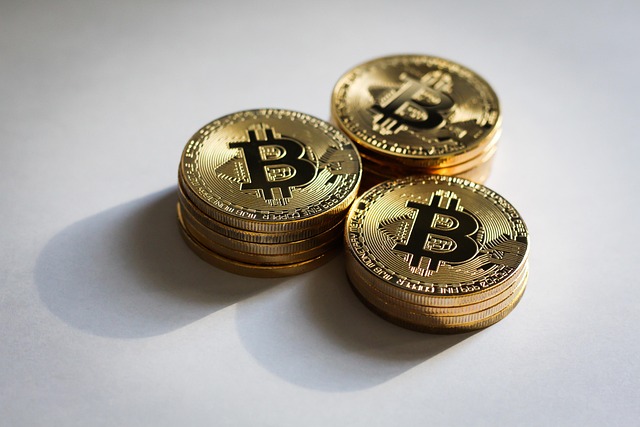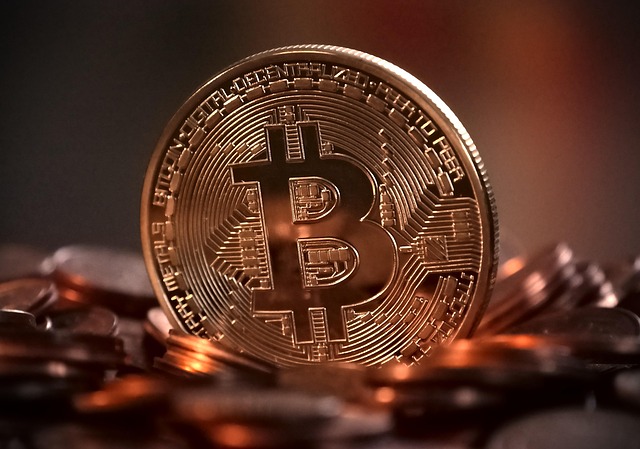Ex-FTX CEO moved to transit facility after interview
Former FTX CEO Sam “SBF” Bankman-Fried has been moved to a transit facility by officials with the Federal Bureau of Prisons, just days after his controversial interview with Tucker Carlson. The move comes as Bankman-Fried continues to appeal his conviction and 25-year prison sentence for seven felony charges.
According to the Federal Bureau of Prisons website, Bankman-Fried is now being housed at the Federal Transfer Center (FTC) in Oklahoma City. This suggests that he may be transferred from the facility where he has been awaiting trial and appealing his conviction.
The move comes after Carlson’s remote interview with Bankman-Fried from the Metropolitan Detention Center (MDC) in Brooklyn on March 5. The interview, which was reportedly unsanctioned, resulted in Bankman-Fried being sent to solitary confinement.
The reason for the move to the Oklahoma transit facility is currently unclear. After his conviction in 2023 and sentencing in 2024, a federal judge recommended that Bankman-Fried remain in the New York area to assist with his appeals process. He was briefly transferred to FTC Oklahoma City in May 2024 before being returned to MDC Brooklyn.
Since his bail was revoked in August 2023 for allegedly attempting to intimidate witnesses, Bankman-Fried has been housed in various facilities. According to the Federal Bureau of Prisons, he was set to be released in November 2044, but his behavior in prison could potentially lead to an earlier release.
This is a developing story and more information will be added as it becomes available. Stay tuned for updates on Bankman-Fried’s situation and his ongoing legal battle.
Circle, Intercontinental Exchange to explore stablecoin integration
Stablecoin issuer Circle and Intercontinental Exchange (ICE), the company that operates the New York Stock Exchange (NYSE) among others and provides clearinghouse services, are collaborating to explore stablecoin integration in ICE’s operations.The companies will explore the potential integration of Circle’s US dollar stablecoin (USDC) and its US Yield Coin (USYC) into ICE’s derivatives exchanges, clearinghouses, data services and other systems, under a memorandum of understanding (MoU) announced March 27. Lynn Martin, president of the New York Stock Exchange, issued this statement alongside news of the collaborative partnership:“We believe Circle’s stablecoins and tokenized digital currencies can play a larger role in capital markets as digital currencies become more trusted by market participants as an acceptable equivalent to the US Dollar. We are excited to explore the potential use cases for USDC and USYC across ICE’s markets.”The potential integration of stablecoins and real-world tokenized products into exchange settlement systems follows Nasdaq announcing 24-hour weekday trading starting in 2026 and the New York Stock Exchange’s plan to extend trading hours during the week as traditional financial markets shift toward a more global orientation.Stablecoin market breakdown by top issuers. Source: RWA.XYZRelated: ‘Stablecoin multiverse’ begins: Tether CEO Paolo ArdoinoStablecoins emerge as store-of-value in developing regionsAccording to Bitso’s “Crypto Landscape in Latin America 2024” report, stablecoins, including Tether’s USDt (USDt) and Circle’s USDC, accounted for 39% of crypto purchases in the region, with USDC accounting for 24% of the total stablecoin volume.The report added that stablecoins have become a store of value against rapidly depreciating local currencies due to significant inflation pressures.A 2023 report from Chainalysis found that stablecoins comprised the vast majority of crypto value received in the Latin American region, where individuals preferred the tokenized fiat instruments to Bitcoin (BTC) as a store of value.USDC was the most widely held and transferred crypto in Latin America. Source: BitsoThe low transaction costs, ease and speed of cross-border transfers make stablecoins ideal for remittances and international business.These features led to a sharp rise in stablecoin adoption in 2024. According to a January 2025 report from CEX.IO, stablecoin transfer volumes surpassed the combined volume of Visa and Mastercard in 2024.Stablecoins recorded $27.6 trillion in transfer volume during 2024, eclipsing the combined volume of Visa and Mastercard by 7.7%.Magazine: Unstablecoins: Depegging, bank runs and other risks loom
Tether’s crosschain USDT0 stablecoin launches on OP Superchain
Tether’s crosschain US-dollar stablecoin, USDT0, has been deployed to Optimism’s Superchain, increasing access to the world’s most widely used stable asset across Ethereum’s layer-2 ecosystem.On March 27, Optimism announced that the dollar-pegged USDT0 is now live on the OP mainnet. The crosschain stablecoin’s first deployment was on Ink, Kraken’s DeFi-focused layer-2.USDT0 is essentially a bridged version of Tether’s USDt (USDT) designed to extend the stablecoin’s adoption across various blockchains.Tether launched USDT0 in January in collaboration with the interoperability protocol LayerZero. One month later, Tether selected Arbitrum as the main infrastructure provider for USDT0.Superchain is a network of layer-2 chains designed to scale Ethereum through Optimism’s OP Stack. The collective currently accounts for 52% of Ethereum layer-2 transactions, according to data tracked by Superchain.Since September, Superchain’s L2 dominance has grown from 36.6% of all transactions to 51.9%. Source: Superchain Health DashboardIn February, Optimism’s chief growth officer, Ryan Wyatt, told Cointelegraph that Superchain will likely account for 80% of Ethereum L2 transactions this year. At the time, Superchain secured more than $4 billion in total value — a figure that has since grown to $4.2 billion.Related: Celo, Chainlink, Hyperlane launch crosschain UDT on OP SuperchainStablecoin adoption heats upSuperchain said that deploying USDT0 is expected to attract “more top-tier assets, applications and partners” to the collective, which highlights the role stablecoins play in fueling DeFi adoption.The total value of all stablecoins in circulation has reached nearly $228 billion, having increased 3.3% over the past 30 days. According to RWA.xyz, there are more than 155 million stablecoin holders worldwide.Ethereum accounts for 58% of the total stablecoin supply.In terms of market cap, Ethereum is by far the largest network for stablecoins. Tether’s USDt is the most widely used stable asset. Source: RWA.xyzTether has long had a first-mover advantage in the stablecoin market. The company has emerged as one of the world’s largest holders of US Treasury assets, which has helped fuel its record-breaking profits in recent years.With President Donald Trump in the White House, dollar-pegged stablecoins have become a major policy driver in the United States.The head of Trump’s council on digital assets, Bo Hines, recently told a conference in New York that comprehensive stablecoin regulations could arrive on the president’s desk within two months.Related: Tether’s US Treasury holdings surpass Canada, Taiwan, ranks 7th globally
Ripple, Chipper Cash partner for faster and cheaper African remittances
Ripple has partnered with African payment infrastructure provider Chipper Cash to support crypto-enabled cross-border payments.According to a March 27 announcement, Chipper Cash will use Ripple Payments for its cross-border transactions as part of the deal. The companies said the partnership is designed to offer faster, cheaper and more efficient settlements.Chipper Cash. Source: Chipper Cash official websiteReece Merrick, Ripple’s managing director for Middle East and Africa, said that the partnership is an important step in the firm’s expansion in the region. He also highlighted that African consumers and businesses “are increasingly recognizing the potential of blockchain technology.”Related: XRP ETF ‘obvious’ as Polymarket bettors up approval odds to 85%The collaboration comes as blockchain adoption continues to grow across Africa, particularly in the remittance and payments sectors. A recent report from Chainalysis found that stablecoins now make up nearly half of all transaction volume in Sub-Saharan Africa.Similarly, a late 2024 report suggested that a number of emerging economies across Africa have the potential to become digital asset hubs. Merrick said:“By integrating our technology into Chipper Cash’s platform, we’re enabling faster, more affordable cross-border payments while driving economic growth and innovation across the markets they serve.”Growing blockchain adoption in remittancesThe Ripple executive further highlighted that as the remittance market grows, many companies decide to adopt blockchain technology for the increased operational efficiency that it allows. Chipper Cash co-founder and CEO Ham Serunjogi said the implementation of crypto in the industry has far-reaching consequences in Africa.“Crypto-enabled payments have the potential to enable greater financial inclusion, accelerate access to global markets, and empower businesses and individuals across Africa,” he said.Serunjogi further explained that, by integrating Ripple, Chipper Cash was able to allow its customers “to receive payments faster and at lower cost.” The partnership also expands on Ripple’s 2023 Onafriq deal, using the firm’s infrastructure to process payments between 27 African countries and Australia, the United Kingdom and the Gulf Cooperation Council.Ripple moves forwardIn March, Ripple also secured a Dubai license to offer cryptocurrency-powered payments in the United Arab Emirates. The company will also likely step up its activities following its recent win against the United States Securities and Exchange Commission. Ripple CEO Brad Garlinghouse said at the time that the decision “provides a lot of certainty for Ripple.” He added:“We now are in the driver’s seat to determine how we want to proceed.”Ripple and Chipper Cash had not responded to Cointelegraph’s inquiry by publication time.Magazine: Real life yield farming: How tokenization is transforming lives in Africa
Is Bitcoin’s future in circular economies or national reserves?
Bitcoin is seeing unprecedented adoption with the US establishing a “strategic Bitcoin reserve,” but some prominent Bitcoin advocates believe the project is getting away from its roots.Earlier this year, Jack Dorsey, a Bitcoin proponent and founder of Twitter, said that he believed if Bitcoin becomes just a form of “digital gold” then the project has failed. He said that a national Bitcoin reserve may be “good for the nation-state, but I don’t necessarily know if it’s good for Bitcoin.” Dorsey contended that Bitcoin needs to return to the white paper and work on becoming a form of peer-to-peer cash that can be transacted globally if it wants to become a success. Around the world, a number of “circular Bitcoin economies” have been working at just that — developing local economies that use Bitcoin as currency in an attempt to showcase its viability and what the future of BTC can look like. The Bitcoin white paper put forward a cash system. Source: Bitcoin.orgBitcoin circular economies and Wall Street The Bitcoin Federation calls a Bitcoin circular economy a “local economic ecosystem where Bitcoin (BTC) is used increasingly as a medium of exchange, a unit of account, and a store of value.” That is, a place where Bitcoin fulfills the three roles of currency, as it is understood. There are diverse Bitcoin communities and circular economies all over the world, but their goal is similar in that they all believe that Bitcoin is the superior form of money and that it should be used “as a means of payment for goods and services and for settlement of other financial obligations.”Related: Failure or 5D chess? El Salvador IMF deal walks back Bitcoin adoptionThis approach of using Bitcoin as a currency diverges from the prevailing attitude in the United States, where crypto advocates view it as a reserve asset to be hoarded — akin to digital gold. President Donald Trump told the Nashville Bitcoin conference in July 2024, “Never sell your Bitcoin.”In a March 17 lecture at the Bitcoin Policy Institute, Strategy CEO and Bitcoin maximalist Michael Saylor likened the digital currency to an investment asset. A significant stake, per Saylor, would allow the holder — such as the United States government — to exert control over the digital economy in another iteration of “manifest destiny.” When asked whether mass adoption by a nation like the US takes Bitcoin away from its founding principles, Isa Santos, founder of the Bitcoin Isla project in Isla Mujeres, Mexico, said: “Yes, but that’s the beauty of Bitcoin. It’s for your enemies too.” Stelios Rammos, the founder of Bitcoin crowdfunding project Geyserfund, said that good or bad, adoption by governments was “inevitable.” “Bitcoin is for everyone, and its truest founding principle is being permission-less money. The adoption of Bitcoin by governments was inevitable, and if there was a button we could press to say ‘governments are banned from Bitcoin,’ then it wouldn’t be Bitcoin anymore,” he told Cointelegraph.Still, he believes that the Bitcoin community has a core set of values that promotes grassroots adoption of Bitcoin over government welfare, adding that Bitcoin is at a stage where Bitcoiners should be more concerned about how it’s adopted rather than whether it’s adopted. “Circular economies will have a huge role to play in bringing about a future where Bitcoin is held and used by everyday people, and not just held as a pure asset within digital vaults at large banks and governments,” said Rammos. Still, both said that there were tangible benefits to government Bitcoin adoption. Santos said that adoption from a large country like the US could still be a positive in that many look to the US as a leader in the financial world. Rammos said that the US adopting Bitcoin will raise awareness about the seminal cryptocurrency, which benefits the entire network and has knock-on effects for circular economies worldwide. What does Bitcoin do for these communities?Bitcoin circular economies are present all over the world. They have gained particular ground in developing economies where the local currency is unreliable as a store of value. In Cuba, where inflation is runaway and salaries are at unlivable lows, Bitcoin and Bitcoin circular economies have allowed locals to protect their savings. In rural Peru, where most people are unbanked i.e. do not have a bank account or access to financial services, Bitcoin has provided a way for locals to save their money and pay for school and everyday expenses.There are challenges, however. Namely, Bitcoin’s notorious volatility makes it difficult to sell as an instrument for savings to rural communities, according to Valentin Popescu, co-founder of Motiv — a Bitcoin education and advocacy group in Peru. Bitcoin communities also face challenges of growing outside the group of Bitcoin expats and enthusiasts who are already present. Bitcoin advocates flocked to El Salvador, where Bitcoin Beach provided the first prototype for a Bitcoin circular economy. However, this did not translate into locals actually using Bitcoin. Related: ‘Bitcoin hasn’t had the widespread adoption we hoped for’ — Nayib BukeleBitcoin circular economies proliferate worldwide. Source: Geyser FundAside from the victories and challenges facing these communities, many of them also offer financial education programming and community-building initiatives. Santos said that “each circular economy has its own unique features. They have to cater to the needs of the communities that make them.” She said that one common factor among such communities is volunteering. Bitcoin Ekasi, a Bitcoin circular economy in South Africa, supports the local Surfer Kids community project by paying coaches’ salaries in Bitcoin while simultaneously onboarding local shops and vendors to accept Bitcoin payments. Rammos said that these communities can put lesser-known locations on the map, attracting tourism through “Bitcoin expats” who want to come to spend their Bitcoin and grow the local economy. “Ultimately, the local populations gain from being a Bitcoin circular economy as much as the Bitcoin network benefits from having them, it’s a true symbiosis,” said Rammos. Whether it is Wall Street or Main Street that drives Bitcoin adoption, the end goal for the organizers running these communities is to have Bitcoin fully integrated into the financial world.Rammos concluded, “There will be a point in the hopefully not-so-distant future, where we won’t need the term circular economies anymore, it will just be the Bitcoin economy, or just, the economy.”Magazine: Arbitrum co-founder skeptical of move to based and native rollups: Steven Goldfeder
What are crypto payment gateways, and how do they work?
Key takeawaysCrypto payment gateways enable businesses to accept cryptocurrency payments from customers. They act as intermediaries, converting crypto payments into the business’s preferred currency (crypto or fiat). Crypto payment gateways reduce transaction fees compared to traditional banking systems and provide access to a global customer base.These gateways leverage blockchain technology to offer secure and faster transactions with fewer intermediaries, enhancing transparency and reducing the risk of fraud.The cryptocurrency industry faces significant challenges, particularly in the area of seamless conversion between digital assets and fiat currencies. This issue makes it difficult for businesses and users to adopt cryptocurrencies for everyday transactions. Crypto payment gateways address this need by simplifying the process of converting digital currencies into fiat, enabling smooth and efficient transactions. This article explores what crypto payment gateways are, how these gateways work, and their pros and cons. Cryptocurrency payment gateways, explainedA cryptocurrency payment gateway is a digital transaction facilitator that enables businesses to accept crypto payments while ensuring seamless processing and settlement.These gateways act as intermediaries between customers who pay with digital assets and merchants who receive crypto payments, helping businesses navigate the complexities of blockchain transactions. Examples of crypto payment gateways include BitPay, Coinbase Commerce and PayPal’s crypto payment service.One of the key advantages of using a crypto payment gateway is that businesses can receive payments in cryptocurrency while opting to convert them into fiat currency, which is then deposited into their bank accounts. This eliminates concerns about crypto price volatility while allowing merchants to offer additional payment options to their customers.Are crypto payment gateways necessary for accepting digital currencies?While crypto payment gateways simplify the process of accepting digital assets, they are not the only way for businesses to receive cryptocurrency payments.Merchants can choose to accept crypto directly by using personal wallets, bypassing third-party processors. However, without a payment gateway, they would need to manually manage transactions, track payments on the blockchain, and handle currency conversion if they wish to receive fiat instead of crypto.For businesses looking to integrate cryptocurrency payments alongside traditional methods, crypto payment gateways provide an efficient solution. These services offer real-time transaction processing, automatic conversion to fiat and additional security features that protect businesses from fraudulent transactions.However, be aware of fees. Coinbase Commerce charges a 1% fee on all crypto payments. After your customer completes a payment, this fee is collected in the settlement currency of the transaction.For example, if your customer makes a $250 purchase in Bitcoin (BTC), and your settlement currency is in euros, it would collect 2.5 euros (1% of the payment amount) as a fee.Types of crypto payment gateways: Custodial vs. non-custodialCrypto payment gateways can be classified into two main types: custodial and non-custodial. The choice between these options depends on a business’s preferences regarding security, control and ease of use.Custodial crypto payment gatewaysCustodial gateways function similarly to traditional payment processors. They receive and temporarily hold payments before allowing merchants to withdraw funds to their crypto wallets or convert them to fiat currency. This model is ideal for businesses that want a streamlined experience without dealing with direct wallet management.Key characteristics of custodial payment gateways include:Automated fiat conversion: Payments can be converted to local currency instantly, mitigating volatility risks.User-friendly dashboard: Merchants can manage transactions, track payment history, and withdraw funds through an online portal.Compliance features: Many custodial gateways implement Know Your Customer (KYC) and Anti-Money Laundering (AML) measures to meet regulatory requirements.Non-custodial crypto payment gatewaysNon-custodial payment gateways provide merchants with full control over their funds by immediately transferring payments to their wallets without holding them on behalf of the business. These solutions prioritize decentralization and security, allowing merchants to manage their own private keys.Key characteristics of non-custodial payment gateways include:Enhanced security: Funds are not stored by the gateway, which reduces the risk of hacks or third-party control.Direct crypto transfers: Payments are sent straight to the merchant’s wallet, which eliminates withdrawal processes.Greater privacy: Merchants can accept payments without undergoing extensive KYC verification.Lower fees: Transaction costs are reduced for both parties since no intermediaries are involved.Increased transparency: The blockchain records transactions, providing an immutable and traceable record.Full control over funds: Merchants retain complete ownership and access to their crypto assets.Did you know? Major banks and fintechs, including Bank of America, Standard Chartered, PayPal, Revolut, and Stripe, are entering the stablecoin market to enhance cross-border payments. How do crypto payment gateways differ from traditional fiat payment gateways?Traditional payment gateways, such as those used for credit card processing, facilitate transactions in government-issued currencies like the US dollar or euro. These fiat gateways connect a merchant’s payment system to a bank, verifying transactions based on the customer’s bank details before authorizing or declining payments.Key distinctions between fiat and crypto payment gateways include:Currency type: Fiat gateways exclusively process national currencies, whereas cryptocurrency gateways support digital assets like BTC, Ether (ETH) and stablecoins.Decentralization: Traditional payment gateways rely on centralized financial institutions, while crypto payment gateways leverage blockchain technology for peer-to-peer transactions.Transaction speed: Crypto payments can be settled in minutes, whereas fiat transactions, especially international payments, may take days to clear.Chargeback protection: Unlike fiat payments, where chargebacks can be issued, crypto transactions are irreversible once recorded on the blockchain.While fiat payment gateways remain essential for conventional banking transactions, crypto payment gateways are expanding payment possibilities by integrating blockchain-based financial solutions. As cryptocurrency adoption continues to grow, businesses must evaluate their payment strategies and choose the right gateway solution that aligns with their operational needs.Pros and cons of cryptocurrency payment gatewaysYou must be aware of the pros and cons of cryptocurrency payment gateways before using them, whether for business transactions or everyday personal use.Pros of crypto payment gatewaysOne of the major advantages of using cryptocurrency payment gateways is the ability to settle transactions quickly. These platforms typically charge a minimal network fee (covered by the service provider) and a small service fee for customers. The streamlined process involves just one intermediary — the crypto payment processor — which enhances the user experience for both businesses and their clients.Additionally, crypto payment systems benefit from the transparency of blockchain technology, offering protection for merchants against chargeback fraud. Unlike traditional fiat payment systems, where transactions can sometimes result in businesses not receiving the funds after they have been deducted from a customer’s account, crypto payments provide more certainty. Furthermore, these gateways can handle a variety of cryptocurrencies, mitigating the risk of market volatility for merchants.Cons of crypto payment gatewaysHowever, crypto payment gateways are still intermediaries in the process, meaning settlements are not fully decentralized. This centralization could pose a risk. For instance, if a crypto payment processor experiences operational disruptions, merchants may face delayed payments until the issue is resolved. Similarly, if the gateway is compromised by a cyberattack, businesses may lose access to their funds.Another downside is that crypto payment gateways can be more expensive than direct blockchain transactions. Since these gateways act as intermediaries, they add their own fees on top of the blockchain network’s transaction costs.As centralized entities, crypto payment processors introduce a level of trust. Merchants need to ensure that the processor is capable of offering reliable, secure services to prevent potential cyber threats.Do cryptocurrency exchanges offer payment gateways?Binance, Coinbase and Kraken, which are centralized cryptocurrency exchanges, provide payment gateways to facilitate crypto transactions. Additionally, they offer application programming interfaces (APIs), which enable merchants to create custom checkout pages with full design control. APIs act as software intermediaries that allow different applications to communicate seamlessly.Binance offers a crypto payment solution called Binance Pay, tailored for businesses that are open to accepting digital currency. Merchants can integrate Binance Pay both online and in physical stores. By displaying a unique QR code, physical stores can offer a secure and contactless crypto payment option, enhancing customer convenience. For online businesses, Binance Pay allows seamless cross-border transactions, providing customers with more diverse payment options. Merchants can either create a merchant account or work with channel partners to start accepting crypto payments via Binance Pay.On the other hand, Coinbase offers its own payment gateway, Coinbase Commerce, which supports 10 different digital currencies, including ETH, USDC (USDC), Dogecoin (DOGE), Tether’s USDt (USDT) and Litecoin (LTC).Payments processed through Coinbase Commerce are instantly converted to US dollars, ensuring stability for merchants. Importantly, Coinbase does not have access to any funds deposited into merchant accounts. If a merchant loses their 12-word recovery phrase, Coinbase is unable to assist in retrieving the lost assets. Additionally, Coinbase applies a 1% fee on transactions before the funds are transferred to the merchant’s account, as mentioned above.Kraken Pay is a cryptocurrency payment processor that allows businesses to accept a wide range of digital currencies, offering fast and secure transactions. It provides easy integration with Kraken exchange wallets, low fees and the ability to convert crypto to fiat, but it still relies on centralized trust.Did you know? In March 2022, MoonPay enabled customers to purchase NFTs directly through marketplaces, simplifying the process by integrating traditional payment methods like credit cards and Apple Pay.Are crypto payment gateways secure?When selecting a cryptocurrency payment gateway, merchants should carefully evaluate how the provider manages the storage of cryptocurrencies and fiat funds.It’s important to review factors such as transaction fees, the variety of supported cryptocurrencies and the platform’s history regarding security breaches or scams. Understanding these elements helps merchants make informed decisions about which gateway aligns with their needs.In addition, ensuring that the crypto payment gateway offers reliable customer support is essential. Having access to prompt and effective assistance is crucial in case of disruptions or issues with payments. A responsive support team can help resolve problems quickly and minimize downtime for businesses.Finally, merchants should always check the reputation of a payment gateway before committing. Consulting specialized review sites and reading feedback from other users will provide insights into the platform’s reliability and trustworthiness. Thorough research ensures that merchants select a secure and reliable payment processor for their business.
MahaKumbh signaled India’s readiness for the metaverse
Opinion by: Shubham Kukrety, co-founder and CEO at QuoteIt Strange sights were seen as India recently concluded MahaKumbh, a Hindu congregation that occurs once every 144 years.Every day, a man took dips at Sangam — the triple confluence of rivers Ganga, Yamuna and Sarasvati — with several passport-sized photographs offering “Digital Snan,” symbolizing digital nectar baths. A nine-acre camp offered people a glimpse of the Hindu religion since the beginning of time. Several families received a 360-degree live virtual MahaKumbh tour with a VR box and packaged pure Sangam water at their homes.These are some of the sights that were seen for the first time in MahaKumbh’s known history. But all of it brings us to a fascinating question: Does the fusion of tech and tradition help us peek into India’s future of the metaverse? Indeed.Adopting technology religiouslyIndia’s approach to technology has always been unique. The country has previously leapfrogged many traditional technology adoption cycles. For example, it moved directly to mobile-first digital experiences without many households ever seeing a landline. As immersive technologies gain traction, the country shows signs of its distinctive adoption pattern.Over the past few years, digitization of religious experiences has surged in India. The VR Devotee app, launched in 2016, streamed rituals and festivals from over 150 temples, allowing devotees to participate virtually. During COVID-19, the platform saw a remarkable 40% jump in user engagement.The Indian government, recognizing this potential, launched “Temple 360” in 2022 — a web portal providing virtual darshan (viewing of deities) from significant pilgrimage sites. When the famous Puri Jagannath Rath Yatra was held without public attendance for the first time in 2020, millions watched live. The same holds for nearly all pilgrimages in India.What’s particularly striking about MahaKumbh?Immersive technologies were embraced at one of Hinduism’s most sacred gatherings, which saw over 663 million people make pilgrimages. If deep spiritual traditions can incorporate digital experiences, it signals a profound cultural readiness for adoption.From skepticism to frontier techUnder the Digital India initiative, AR/VR is explicitly identified as an emerging technology alongside AI, blockchain and 5G networks. And this isn’t mere lip service.The government has backed its words with concrete actions, establishing Centers of Excellence like VARCoE at the Indian Institute of Technology Bhubaneswar and launching initiatives such as IMAGE to incubate extended reality (XR) startups. In 2022, the MeitY Startup Hub partnered with Meta to launch the XR Startup Program, extending grants worth 20 lakh Indian rupees (~$23,000) to 16 startups.Recent: Indian town adopts Avalanche blockchain for tamper-proof land recordsThe Uttar Pradesh government recently launched a 3D VR experience center in Ayodhya. Multiple Hindu religious places, including Kashi Vishwanath Dham and Maa Vaishno Devi Bhawan, have already extended such immersive experiences.This deliberate strategy can prove to be a catalyst in India’s XR adoption, tapping the nation’s rich cultural heritage.Corporate giants embrace the immersive futurePerhaps the most telling sign of India’s metaverse readiness comes from its corporate landscape. Reliance leads the charge, headed by Asia’s richest person, Mukesh Ambani. In a landmark development, Jio Platforms recently partnered with Polygon Labs to integrate Web3 and blockchain capabilities into its existing digital ecosystem.The partnership is no small feat. It potentially brings Web3 functionality to Jio’s vast user base of over 482 million customers. Jio had previously demonstrated its commitment to immersive technologies by unveiling “Jio Glass,” an affordable mixed-reality device designed for the Indian market. Reliance’s acquisition of Tesseract in 2019 and recent discussions with Meta underscore its long-term bet on immersive futures.The country’s largest telecom provider is strategically investing in metaverse-enabling technologies. This speaks volumes about the future of digital experiences in the country.This year, after announcing its partnership with Polygon, Jio also launched its mystery JioCoin, a significant development for the Indian Web3 community. Meanwhile, the Indian Railway Catering and Tourism Corporation also issued non-fungible (NFT) train tickets on the Polygon blockchain to passengers traveling to the MahaKumbh festival.These initiatives tapped Polygon specifically for its faster throughput and low gas fees — practical considerations that signal maturity in blockchain implementation in India.Differing perspectives and the elusive mainstream momentNot everyone is convinced that digitizing sacred experiences represents progress. The “Digital Snan” service for 1,100 rupees in Sangam triggered a significant backlash on social media. Critics viewed such services as commercializing spirituality and reducing sacred rituals to transactional experiences.Furthermore, it’s been over eight years since Pokémon Go took the world by storm, demonstrating AR’s potential to create cultural phenomena that transcend demographic boundaries. The world hasn’t seen anything of that magnitude ever since.This absence of a defining moment also raises questions about whether immersive technologies will achieve the ubiquity that smartphones have at present. Mall VR arcades attract curious teens for one-off experiences, but habitual usage patterns haven’t materialized outside specific professional contexts.Green shoots of adoption?What distinguishes India’s potential metaverse from Western models is its grounding in cultural contexts with profound meaning for millions. While Silicon Valley envisions virtual offices and digital asset speculation, India’s early applications focus on democratizing experiences of profound cultural significance.This culturally rooted approach could ultimately prove more sustainable. By addressing genuine human needs — connection to heritage, participation in community rituals, access to experiences otherwise impossible due to distance or disability — India’s metaverse initiatives may find the elusive “why” that has hampered mainstream adoption elsewhere.Opinion by: Shubham Kukrety, co-founder and CEO at QuoteIt.This article is for general information purposes and is not intended to be and should not be taken as legal or investment advice. The views, thoughts, and opinions expressed here are the author’s alone and do not necessarily reflect or represent the views and opinions of Cointelegraph.
BlackRock Bitcoin ETP ‘key’ for EU adoption despite low inflow expectations
BlackRock’s new European Bitcoin exchange-traded product (ETP) is a major step for Bitcoin’s institutional adoption in Europe, though analysts expect lower inflows than its US counterpart.The iShares Bitcoin ETP, managed by the world’s largest asset manager, began trading on March 25 on Xetra, Euronext Amsterdam and Euronext Paris.While the launch marks a significant step in bringing Bitcoin (BTC) exposure to European investors, analysts at Bitfinex said the product is unlikely to match the success of the US-based iShares Bitcoin Trust exchange-traded fund (ETF), which has seen strong demand from institutional and retail investors.SiShares Bitcoin ETP listings. Source: BlackRock“The US spot Bitcoin ETFs benefited from pent-up institutional demand, a deep capital market and significant retail investor participation,” Bitfinex analysts told Cointelegraph, adding:“The presence of a BlackRock Bitcoin ETP in Europe still represents progress in terms of mainstream adoption, and as regulatory clarity improves, institutional interest could grow over time.”They added that although Europe’s Bitcoin ETP market may develop at a slower pace, it remains a key part of Bitcoin’s global adoption story.BlackRock, which oversees more than $11.6 trillion in assets under management, could encourage broader adoption of Bitcoin investment products in Europe and open new pathways for institutional capital to enter the crypto market.Bitcoin ETF, institutional holder growth. Source: Vetle LundeOver in the US, institutional adoption of Bitcoin ETFs surged to over 27% during the second quarter of 2024 when over 262 firms invested in Bitcoin ETFs, Cointelegraph reported on Aug. 16.Related: BlackRock increases stake in Michael Saylor’s Strategy to 5%BlackRock’s global reputation may build momentum for European Bitcoin ETP adoptionBlackRock’s global reputation and expertise may “gradually build momentum” for European Bitcoin ETPs, according to Iliya Kalchev, dispatch analyst at digital asset investment platform Nexo.“Modest inflows shouldn’t be interpreted as a failure but rather as a function of structural differences in the market,” Kalchev told Cointelegraph, adding:“Long-term success in Europe may depend less on first-week flows and more on consistent access, education and infrastructure — elements BlackRock is well-positioned to deliver.”While BlackRock’s European fund may not replicate the explosive growth of its US Bitcoin ETF, this should be “seen in context, not as a red flag,” considering the smaller European market’s limited liquidity.Related: Michael Saylor’s Strategy surpasses 500,000 Bitcoin with latest purchaseBitcoin ETF dashboard. Source: DuneBlackRock’s US spot Bitcoin ETF briefly surpassed $58 billion, making it the world’s 31st-largest ETF among both traditional and digital asset funds as US Bitcoin ETFs surpassed $126 billion in cumulative BTC holdings, Cointelegraph reported on Jan. 31.BlackRock’s ETF currently accounts for over 50.7% of the market share of all spot US Bitcoin ETFs, valued at $49 billion as of March 27, Dune data shows. Magazine: Bitcoin’s odds of June highs, SOL’s $485M outflows, and more: Hodler’s Digest, March 2 – 8








